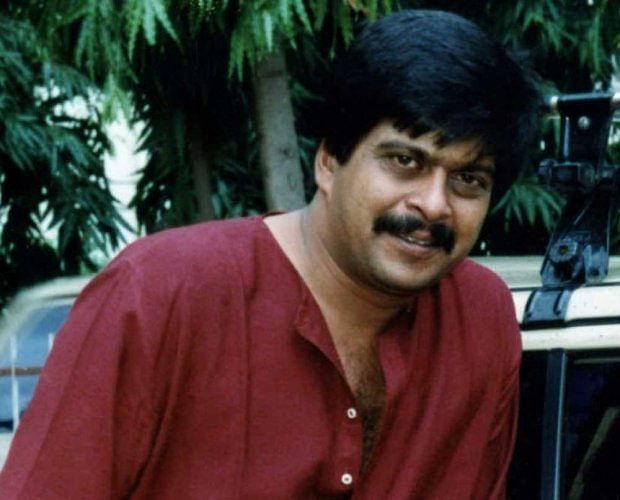
As BIFFES 2019 is coming to a close, the hope is that a new crop of young filmmakers will be inspired by the movies they watched in the last 7 days to create their own stories. In his interview with DH, BIFFES artistic director N. Vidyashankar asserted that while our film-makers can very well find good stories and content to work with, they lack the technical skills to efficiently present it on the silverscreen.
All those who grew up in the era when actor-director Shankar Nag was active may disagree with the above statement. He was as technically sound as he was in the choices he made when it came to content and story. The impact of Shankar Nag is so massive that even 28 years after his untimely death, his apparition lingers in Bengaluru, be it behind the auto-rickshaws or on the steps of Rangashankara.
While his pan-India reputation was made by the delightful TV adaptation of RK Narayan’s Malgudi Days, in Karnataka his stardom was solidified initially by masala movies like Seetha-Ramu and crowd-pullers like Auto Raja and the Sangliana series. A lot of us still remember Shankar Nag longingly look at his co-star and real-life sister-in-law Gayatri and sing 'Naliva Gulabi Hoove' in Auto Raja.
However, his acting abilities paled in comparison with his talent as a director behind the scenes.
In his 1987 movie Ondu Muttina Kathe, Shankar Nag directed the legend Dr. Rajkumar himself, fondly known as Annavru, which was a casting coup of sorts. One underwater sequence of this movie is remembered even today for its technical brilliance despite the technology being limited back then. Moreover, he was able to convince the then 58-year-old Dr. Rajkumar to perform this shot, even though it is believed that Parvathamma, Dr. Rajkumar's wife, was against it.
One of the signs of a great director is to get the best from his/her actor. Shankar Nag did that, oh so brilliantly, with none other than Annavru himself.
The relationship between the actors and directors is based on trust. After all, even an auteur who may have a single, subjective vision for the film has to rely on the actors to bring that vision to life. Since his days with his theatre troupe Sanketh, Shankar Nag collaborated with the same group of actors: his brother Anant Nag, Arundhati Rao who would become his wife, Ramesh Bhat, among others. He rightly recognised cinema as a collaborative medium and relied on people around him, who creatively complemented him.
In one of her interviews, Arundhati Nag describes his quiet nature, a man who was an avid reader. His tryst with literature made him choose John Steinbeck’s The Pearl (for Ondu Muttina Kathe) as well as RK Narayan’s Malgudi Days which are two of his best works as a director with vision.
Where are today’s Shankar Nags, who not only can identify good stories but possess the knowledge of cinematic language to present it in the best way possible?
As with a panel literally titled ‘Success Story’ at BIFFES this time, KGF is being celebrated as the benchmark for what Kannada cinema needs to achieve. Is surpassing Karnataka's borders and finding marketability beyond by using technical prowess the new definition to success? Is that the mere yardstick that we are measuring Kannada cinema by? The hollowness of this claim is too loud to ignore.
The story of KGF is mediocre, no different than hundreds of a rowdy-with-a-heart-of-gold trope that was first introduced compellingly in Upendra-directed, Shivarajkumar starrer Om, reaching a crescendo with Prem-directed Jogi. Using latest technology just for the sake of it, without questioning its merits with relation to the story itself, serves no purpose.
The reverential relationship between the camera and the ‘hero’ of the movie, as seen with KGF, is all too common. Hence, a storyteller like Shankar Nag matters. His characters from Minchina Ota, Accident presented amorality of their protagonists more realistically, by framing them within a larger context of the socio-political milieu of the time. When the film begins, the protagonists in Minchina Ota do want to earn their living honestly. The politicians in Accident are not an incarnation of the devil himself. Circumstances figure more prominently than the binary values of good vs evil, which is often portrayed in essential terms. Life and all its colours were inspiration for Shankar Nag, fondly called Shankru by industry colleagues and fans alike. He captured shades of grey like no one else, and no subject matter was taboo: acid-fueled orgies, jail breaks, never-do-wells in society, misanthropes, salt-of-the-earth characters, the innocence of childhood, and indeed, romantic love.
Though he was not overtly political, his movies were political in addressing contemporary issues like corruption realistically, without toeing the ideological line. In an era of The Accidental Prime Minister and Uri, it is important to turn to a filmmaker who understood the power of cinema. Ideology can inform art, but when ideology itself becomes art, it no longer remains as art. It becomes propaganda. I believe Shankar Nag knew that.
While today’s commercial filmmakers scoff at art movies for being boring and arthouse directors disregard anything commercial, the loud, self-aware kind of movies made with latest technology and panderingly high degree of entertainment value, Shankar Nag is more relevant than ever. As a director, he never chose content over form or vice versa. As an actor, he did not discriminate between them. That is why, he is the only film-maker in Kannada, who has been able to surpass the mass-class divide.